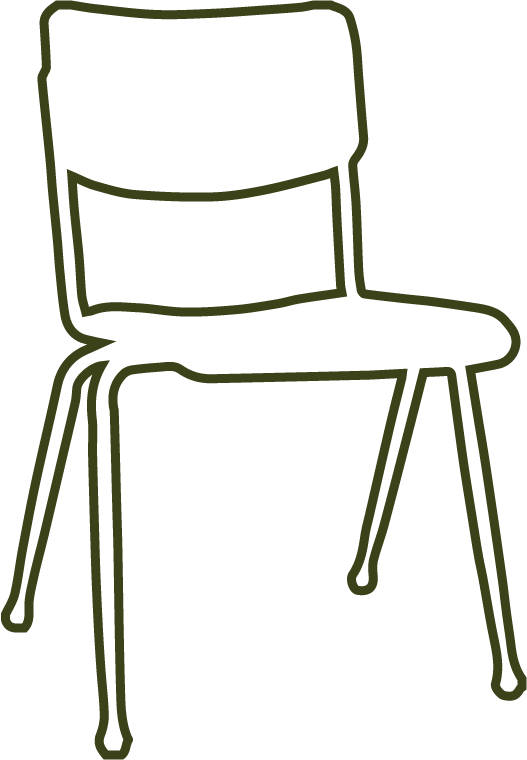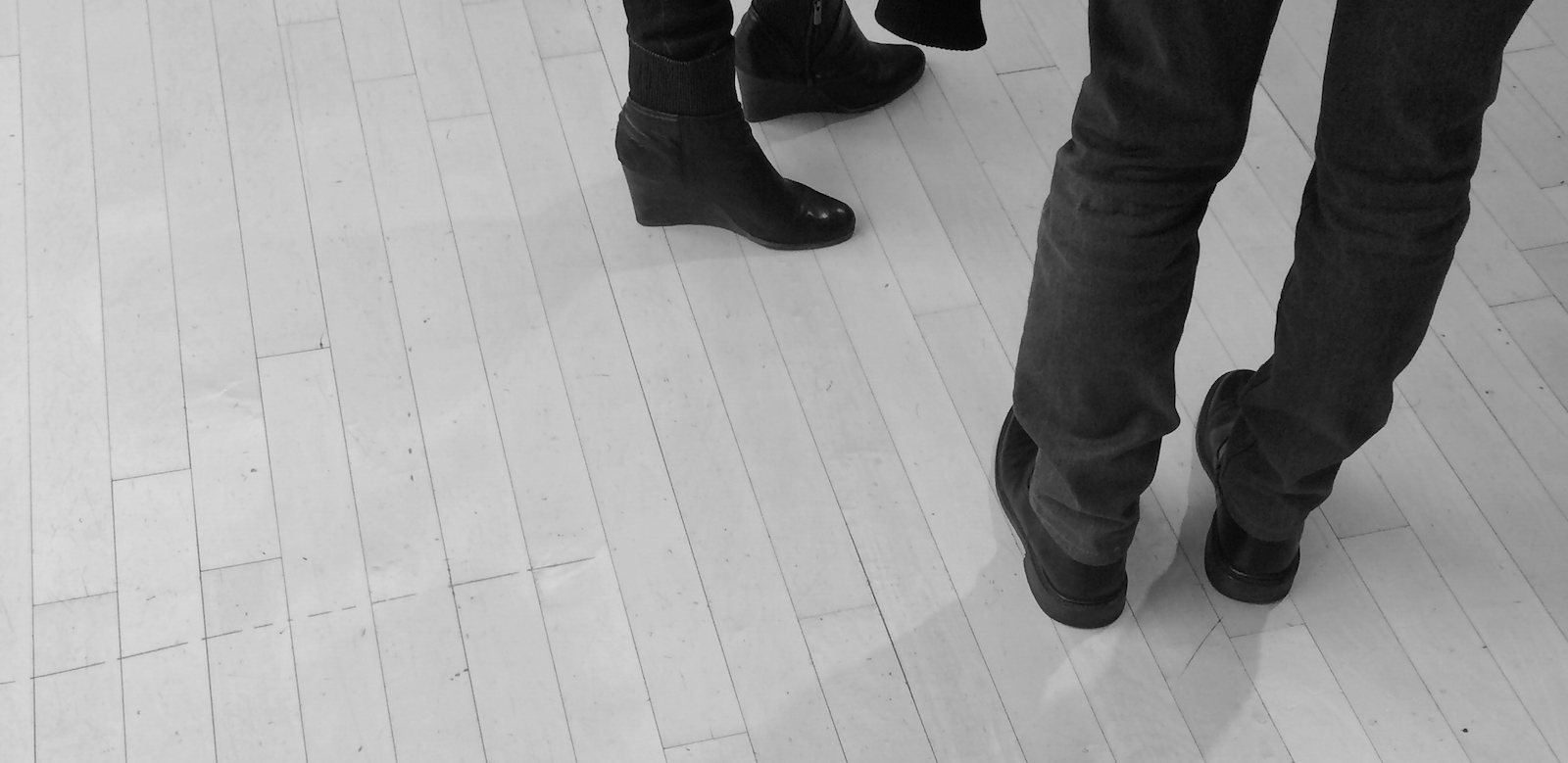—Christine Sun Kim, “Partial Thesis Statement”
Anne: This chapter opens in a place between.
Not a classroom, or a conference hall—it’s an art space. October 2012. I’ve just arrived, late on a Friday evening, at Haverford College’s Cantor Fitzgerald Gallery, for the opening of yet another astonishing event initiated by my friend Kristin Lindgren. The works of nine disabled artists are being showcased here, in a provocative exhibit that aims to demonstrate that “we do not yet know what bodies are, nor what bodies—all bodies—can or should do.”“What Can a Body Do?” Exhibit curated by Amanda Cachia, Cantor Fitzgerald Gallery, Haverford College, October 26—December 16, 2012.
The highlight this evening is a performance by Christine Sun Kim, a deaf artist who declares that she is “allowed to make sound,” to “reclaim it as her property,” although she is never “at ease nor in complete control of sounds she makes,” knowing that they violate conventional etiquette about what noises are permissible. In my class earlier this week, Christine had asked provocative questions about ownership, negotiation, and translation (“I have no access to the files I make; if I am making sounds I can’t hear: do they belong to me?”) and—describing her deep sense of interdependency—called herself “a collaboration whore.” This evening she’s conducting an astounding experiment with “sound as texture.” The gallery is overcrowded; I have trouble seeing the performance, in which Christine is making vibrations visible in paint.Christine Sun Kim, “Is Unlearning Sound Etiquette” and “Partial Thesis Statement.”
But then I see Clare. Delighted with the opportunity to catch up after a long gap in our own collaborations on access initiatives at Bryn Mawr,See Chapter 5, “Unbecoming.” we also seriously violate “sound etiquette” by turning our backs on the performance, in order to share stories about what each of us is up to now. I tell about my new courses (including the one Christine just visited, which focuses on “the rhetorics of silence”).See Chapter 4, “Silencing.” Clare introduces her new friend and colleague, Kevin Gotkin, with whom she’s initiated a Disability Studies Reading Group at the University of Pennsylvania, where both are graduate students. Eager for more shared engagement, we agree to meet again soon.
When we do, I invite Jody to join us; like me, she’s an alum of Penn’s Graduate School, with some family experience of disability, but little knowledge of the field of Disability Studies, which intrigues her. Like me, she’s also just delighted to be talking with grad students again: so close to us in intellectual and life interests, so far from us generationally. Graduate school is much more focused on quick professionalization than it was back in the day, and Clare and Kevin are on career trajectories very different from the sort of non-linear tracks Jody and I have both been traveling for so long.
Happily engaged, we agree to meet again. And again. Much of our conversation is fueled by what we are learning together about Disability Studies. Kevin works on the intersections of technology and disability in the field of Communication; Clare is using Disability Studies as a methodology for reading nineteenth-century literary texts. Jody and I are finding in Disability Studies a profound extension of the thinking we’ve been doing about “unbounded” teaching, as we follow the intermeshing of everything deep into the varieties of the human unconscious, as well as into “outside” spaces of uncertainty, incompleteness, and conditionality.
Each of the four of us feels deeply drawn to what Kristin Lindgren calls the “inventiveness, creative interdependence, and artful navigation of the built environment” required by the “daily lives of most disabled people,” wanting better to understand the ways in which “variability in human form and function…give rise to creativity and new knowledge.”Kristin Lindgren, “The (S)paces of Academic Work: Disability, Access, and Higher Education” in Transforming the Academy: Faculty Perspectives on Diversity & Pedagogy, ed. Sarah Willie-LeBreton (New Brunswick: Rutgers University Press, 2016), 114. Each of us has also had a somewhat fraught relationship to the field of Disability Studies, has been concerned that we may not fully fit (or be seen as not fitting) within its borders. Elizabeth Ellsworth’s observation that, if “perfect fit” were possible, it would in fact guarantee that no learning would happen,Elizabeth Ellsworth, Teaching Positions: Difference, Pedagogy, and the Power of Address (New York: Teachers College Press, 1997), 44. along with Rosemarie Garland-Thomson’s explication of the many ways in which “misfitting can be generative,”Rosemarie Garland-Thomson, “Misfits: A Feminist Materialist Disability Concept,” Hypatia: A Journal of Feminist Philosophy 26, no. 3 (Summer 2011): 604. enables us now, however, to see this nagging issue of our “fit” as both a clue to emerging directions in Disability Studies, and a crack where we might enter.
In line with the work of Garland-Thomson, and the larger argument of this book, Clare, Kevin, Jody, and I here posit the notion that “disabled enough” thinking—the sense that only some of us fully fall within the category of “disability”—obscures the true creative wellspring of what it means to embody both physical and cognitive difference. In his film, “The Rupture Sometimes” (which was playing at the Haverford exhibit), Kevin observes, “It is the gradations, shades and registers—all the things that mark both differences and similarities—that open up disability into a capacious intellectual brain space.”Kevin Gotkin, “The Rupture Sometimes,” YouTube video, 27:44, September 19, 2012.
Throughout this book, Jody and I similarly query identifiable, claimable categories, predictable “uptakes” in teaching, learning, living: the spaces among us, the gaps Ellsworth identifies between perception and cognition: unconscious yet palpable in their diversity, unruliness, and fertility. In this chapter, Clare and Kevin join Jody and me in arguing that attending to a world of unpredictable, inexhaustible interconnection, as well as to (temporary or longer-standing) experiences of fear and pain, constraints and limits, shifts not only our orientation toward classroom interactions, but also our understanding of a wide range of academic and activist fields that do not explicitly define themselves as either psychological or ecological.
As a way of experimenting with this sort of re-orientation, the four of us draw connections among wild internal diversity, unruly classrooms, and the fields of study in which we position ourselves, tracing a variety of fluid passages between sites of learning and disciplinary formations. We try out, in particular, the implications of thinking ecologically in the field of Disability Studies, which seems to hold real promise for understanding what it means to be humans in relationship with the environments in which we learn.
We are well accompanied in this exploration by an emerging group of “crip ecologists,” who work across the fields of disability, queer studies, and ecocriticism to think through the interchanges of environments and bodies in radical ways. As a noun, “crip” shortens the word “crippled,” claims it as a proud identity. As a verb, “cripping” has a much larger reach, is used politically “as a way to re-imagine conceptual boundaries, relationships…cultural representations, and power structures.”Emily Hutcheon and Gregor Wolbring, “‘Cripping’ Resilience: Contributions from Disability Studies to Resilience Theory,” M/C Journal 16, no. 5 (November 6, 2013).
Crip ecologists think evolutionarily, of all life as adaptive to the environment.Cf. Mel Chen, Animacies: Biopolitics, Racial Mattering, and Queer Affect (Durham, NC: Duke University Press, 2012); Kevin Gotkin, “The Norm___ and the Pathological,” DSQ: Disability Studies Quarterly 36, no. 1 (2016). Acknowledging that some bodies are more durable, others more vulnerable, crip ecology is not a minoritarian discourse: it understands all of us to have a certain eco-enmeshment. Everyone is porous, permeable, allowing the outer world to flow through us.Levi R. Bryant, “Stacy Alaimo: Porous Bodies and Trans-Corporeality,” Larval Subjects, May 24, 2012.
As materials for understanding, crip ecologists draw out wanted, unwanted, known, unknowable intimacies with ourselves and all that surrounds and interpenetrates all types of human bodies.“Welcome to Crip Ecologies!” Composing Disability Conference, March 2016. Approaching “nature through the lens of loss and ambivalence,”Alison Kafer, Feminist, Queer, Crip (Bloomington: Indiana University Press, 2013), 142. crip ecology conceptualizes humans as vulnerable, embodied beings interacting with environments: affected by the places we inhabit, simultaneously leaving our imprint on these locations.

